

Temple of Hibis
About 2 km from the city of EL-Kharga lies the well-preserved Temple of Hibis in an ancient city with the same name. Dating back to the 27th Dynasty .
When was the temple of Hibis built?
About 2 km from the city of EL-Kharga lies the well-preserved About 2 km from the city of EL-Kharga lies the well-preserved Temple of Hibis in an ancient city with the same name. Dating back to the 27th Dynasty . Temple of Hibis in an ancient city with the same name. It is by far the largest and finest of temples from Egypt’s 200 years under Persian rulers. Dating back to the 27th Dynasty and erected by King Darius I, under the Persian Rule, the temple was built within a fortress and was surrounded by a lake (now disappeared). It was dedicated to god Amun (Amoun or Amen), his wife Mut and their son Khonsu (Khunso). Nectanebo II and the Ptolemaic Kings added some annexes to the temple. On the temple's walls, were found traditional scenes of making offerings to the Triad of Amun and to other gods. The outer walls are decorated with painted vultures and huge reliefs of Darius greeting Egyptian gods. Wall reliefs mirror the religious life of the ancient Egyptians. Sunk in sand for more than 18 centuries, the temple was found well-preserved and almost intact. To avoid the potential danger of the several problems underground waters can cause to the temple, the Egyptian Authority of Antiquities plans to move it and place it near the Cemetery of El-Bagawat. At the site, there is a necropolis that dates back to the Greco-Roman Peri
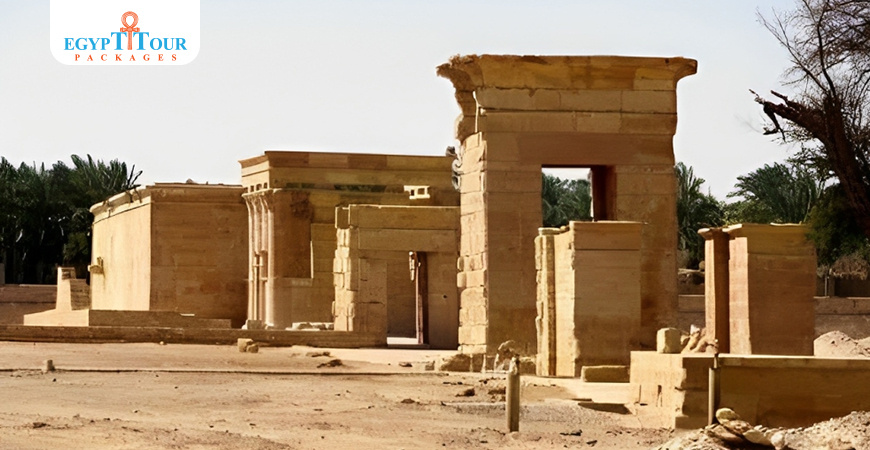
Hibis Temple Kharga Oasis
The temple is located in the northern part of the city of Kharga. The importance of the temple is due to the fact that it is the only one remaining from the Sawi-Persian era in Egyptian history (from 660 to 330 BC). It is also one of the most famous temples in the Western Desert, and represents the ancient Egyptian eras, beginning with The Pharaonic era to the Persian and Sawi dynasty, then the Ptolemaic era and ending with the Roman (Greek) era. The temple was dedicated to the worship of the holy trinity of Thebes (Amun, Mut, and Khonsu), the father Amun, his wife Mut, and their child son Khonsu. It was also dedicated to the worship of the general trinity (Osiris, his wife Isis, and their son, the falcon, Horus).
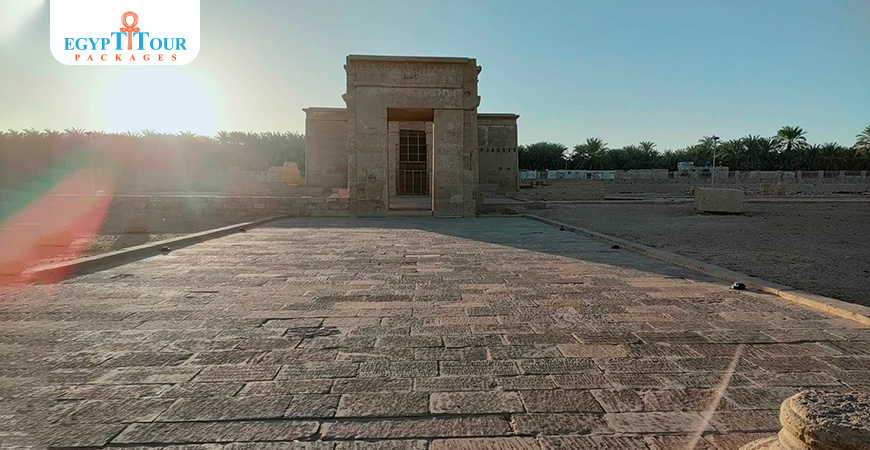
Temple of Hibis photos
The stones of the Temple of Hebes came from the Mokattam Mountain area, and were established by King Darius I in 510 BC. AD in the 27th Dynasty. The temple was built by Pharaoh Ahmose II and restored by Darius king of the Persians, who ruled Egypt during the period of Persian occupation of Egypt. He built it to please the priests of Amun, as Darius came to succeed King Cambyses, who wanted to occupy Egypt, but the priests of the Temple of Amun in the oasis guided him when he headed to the oasis. Siwa took a wrong path, so he and his army drowned in the Great Sand Sea and were unable to invade Egypt. It suggests that the authority of the priests was great and influential at that time, so Darius wanted to get closer to them, so he built and restored the temple or the occupying Persian king may have been influenced by the worship of the god Amun.
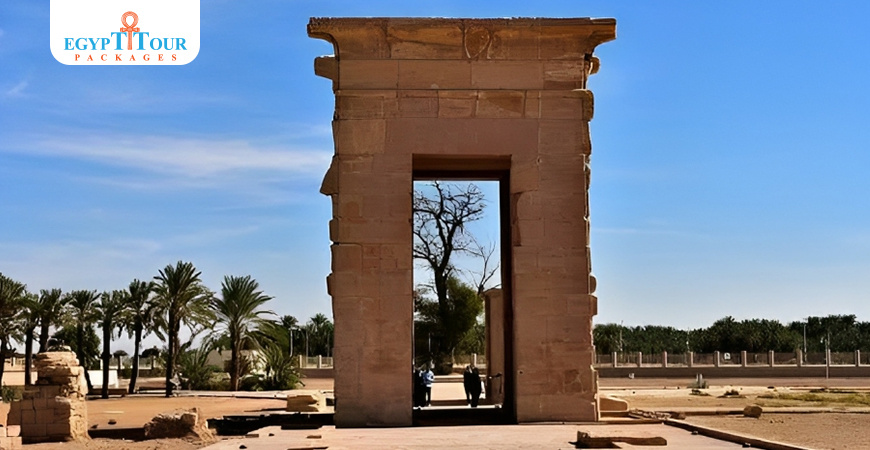
Hibis Temple
In the subsequent eras of the Persian era, many additions were added to the temple until its elements were complete. This was in the period between 390 BC and 69 AD. The temple’s layout is similar to the layout of the Egyptian temple in the New Kingdom (the gate, the path of rams, the open courtyard, the hall The first and second columns, the hall of the Holy of Holies, then the Holy of Holies), which is the layout that was continued by the Egyptian temples that arose in the Ptolemaic and Roman eras. The temple begins from the east (with the marsa), which is a small port to receive boats carrying goods for the temple and the sacred boats. It is located on The edge of an ancient lake called the Holy Lake. Its waters collected in a low area due to rain, groundwater, and the leakage of water from surrounding crops. It has now dried up and become shallow.After the marsa, we head east and find in front of us several gates starting with the “Roman Gate” with a text written in ancient Greek dating back to the era of the Roman Emperor (Galba) and representing a number of legal, economic and social legislation, some administrative reforms, as well as the imposition and collection of taxes and fees.
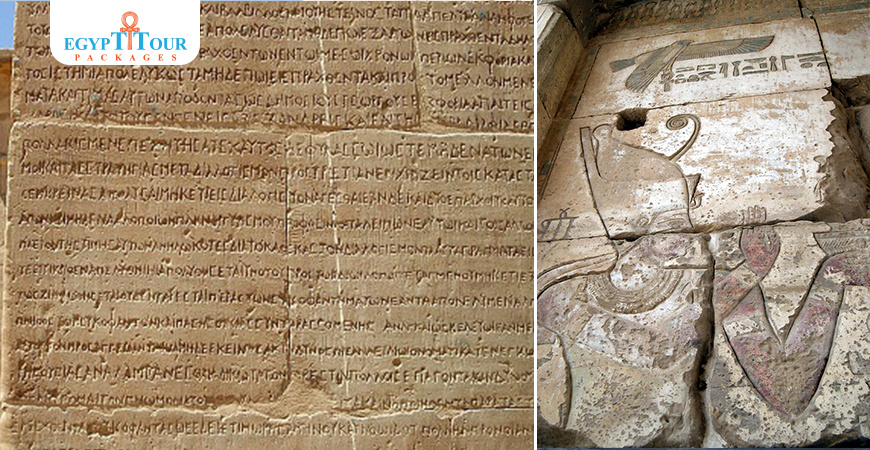
The Temple of Hibis
Through this gate, we reach (the Road of Rams), which was built in the Ptolemaic era. It is a small road for rams on both sides. There may have been 8 rams, 4 on each side. The Road of Rams extends to the Great Gate (the Second Gate) or what is known as the Ptolemaic Gate.After that, we head to the (Ptolemaic Gate) or what is known as the Great Gate, which was built in the Ptolemaic era in the era of King Ptolemy II, and is considered the largest and highest of these three gates. This gate was subjected to a major earthquake that shook all of Egypt in the late 18th century, approximately 300 years ago. A year ago, the northern side of this gate was destroyed and most of it was completely demolished, but it was rebuilt again.Through this gate, we reach the third gate (the Persian Gate), which dates back to the Persian era, and was built by King Darius I in the 27th Dynasty in 500 BC. Behind the last gate are two obelisks, followed by (a courtyard for Kings Nectanebo I and II) from the (30th Dynasty).
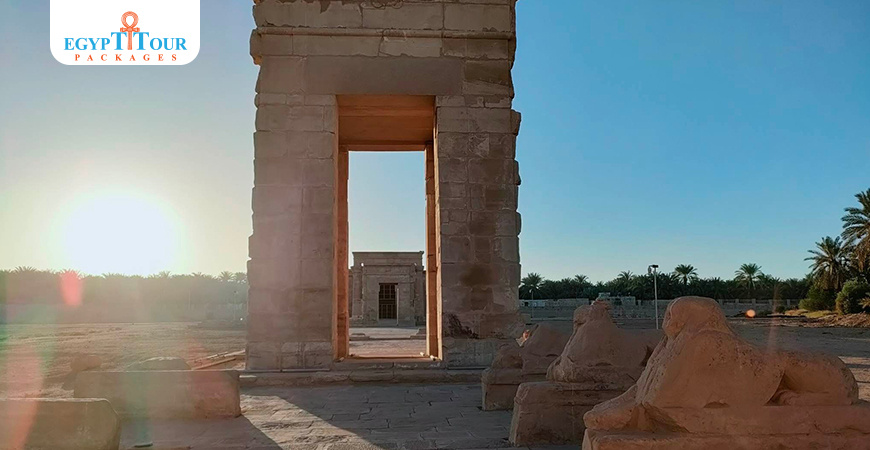
Temple Of Hibis
To the south of it is the Holy of Holies, and in the corner there is a staircase that leads to the Temple of Osiris, which is located above the rooms to the south of the third hypostyle hall, and from there to the roof of the temple. To the north of the temple there was an old church of which only the remains of a few stones remain. There are traces of openings in the northern wall of the temple on which ancient church buildings were based. Around the temple there are remains of sandstone that surrounded the temple on three sides: the northern, southern and western. It was demolished and only a few parts of it remained.On the south-eastern side there are the remains of a small, low-rise building called the “Mamizi” building meaning the birth house. Outside the temple there were the houses of the priests, warehouses, and administrative facilities for the temple.
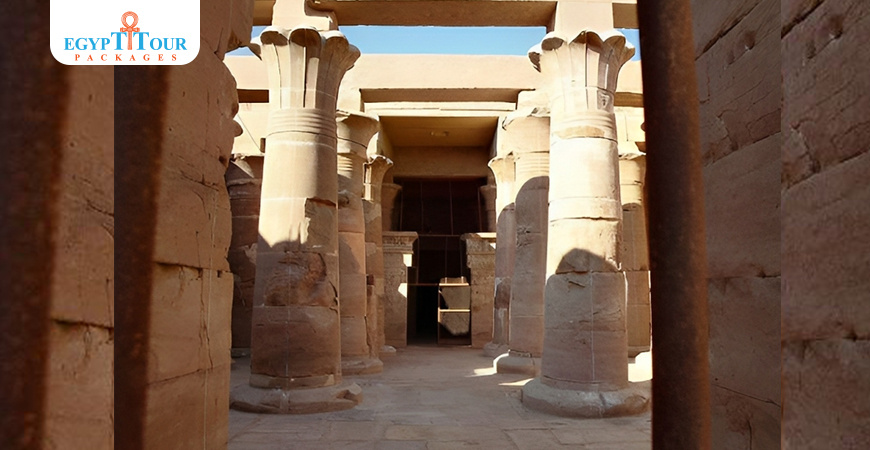
Temple of Hibis facts
The temple contains a unique collection of scenes and engraved paintings, which are not repeated in most Egyptian temples. There are some rare scenes in the temple that are found only in this temple, including the king offering offerings and gifts to the gods and deities, as this temple includes a very large and diverse group of Deities, led by the Holy Trinity of Thebes, as well as the Trinity of Memphis was one of the oldest and most important cities in ancient Egypt, located at the entrance to the Nile River Valley near the Giza plateau. Memphis and the Holy Ennead, and also Thamun the Ashmunin, in addition to many local and foreign deities such as the Syrian deity (Astarte), who was worshiped in Egypt at one time and was united with the Egyptian deities, as the Holy of Holies of the temple contains Approximately 550 or 600 gods, as the king who established the temple wanted to get closer to the people of the oasis and to the priests of the temple, so he collected many gods and they were depicted on the walls of the Holy of Holies.The most important view in the temple is the one on the far right of the western wall of the great hypostyle hall with twelve columns. It is a relief carved into the wall representing the deity (Set) fighting the snake Apophis as a symbol of evil, as ancient mythology described Set as a goddess of evil in a story. Osiris, as Set killed his brother Osiris out of spite because he married his beautiful sister Isis and he married his less beautiful sister Nephthys.

Post A Comment
Your Email Address Will Not Be Published.
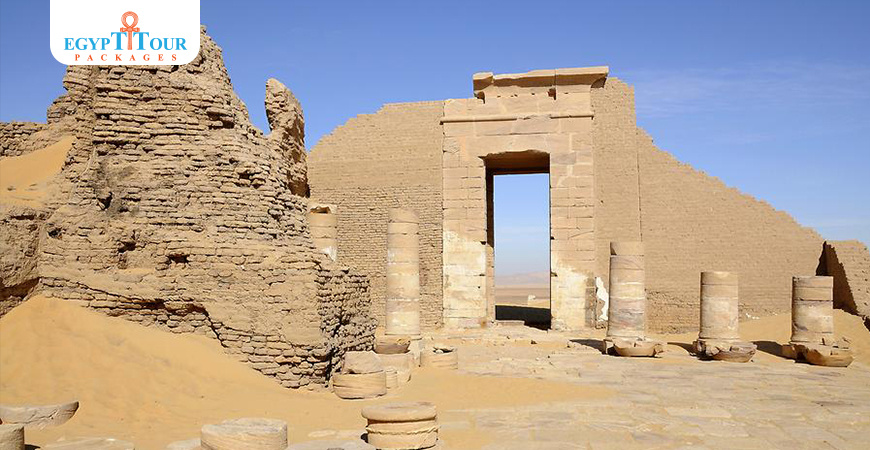


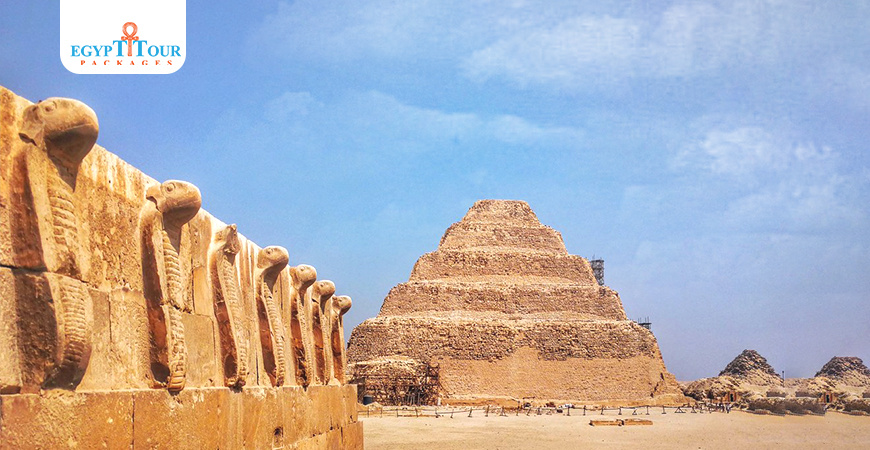







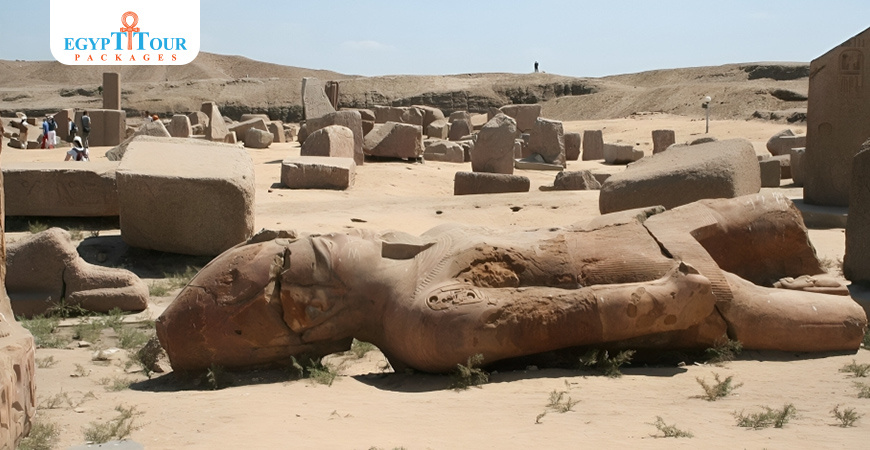


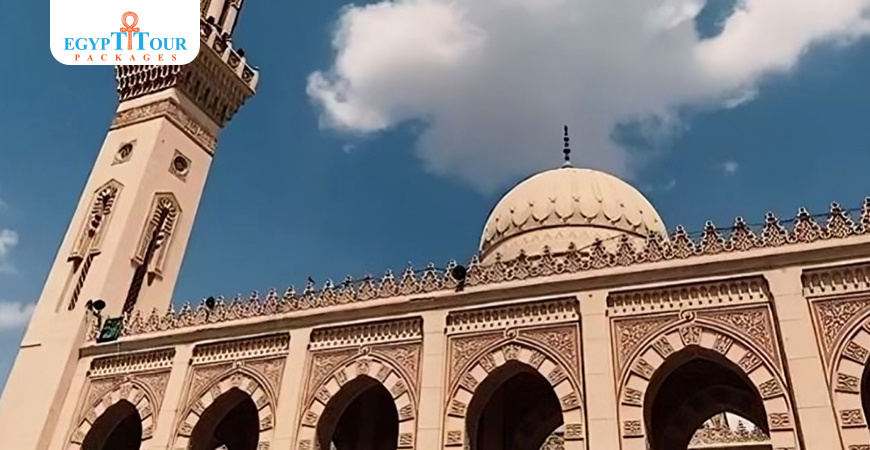


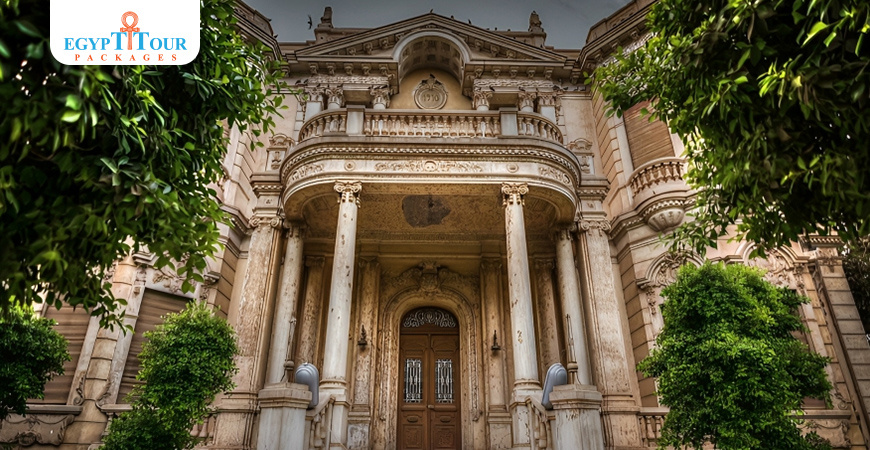
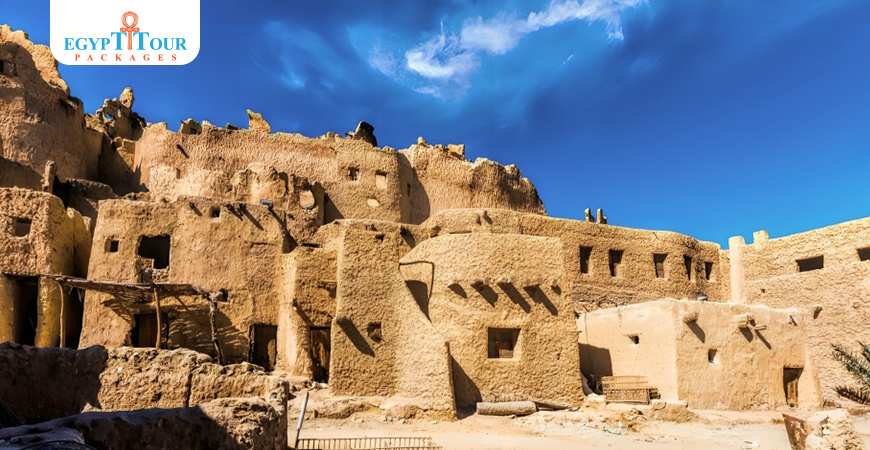
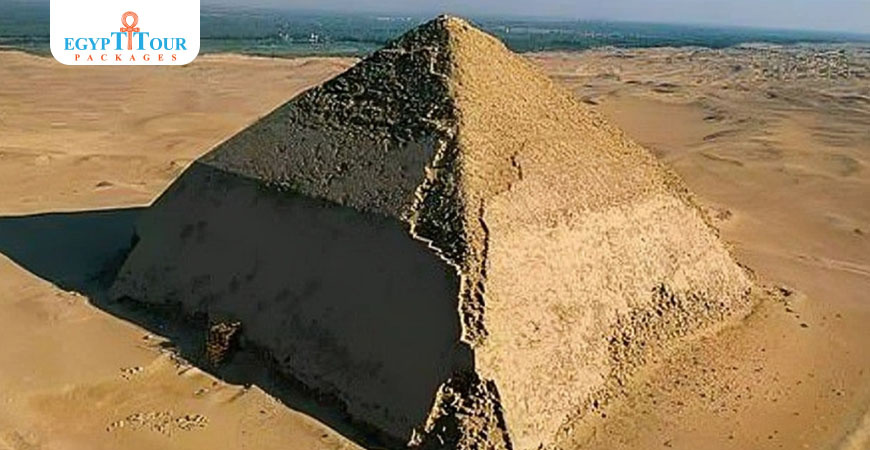
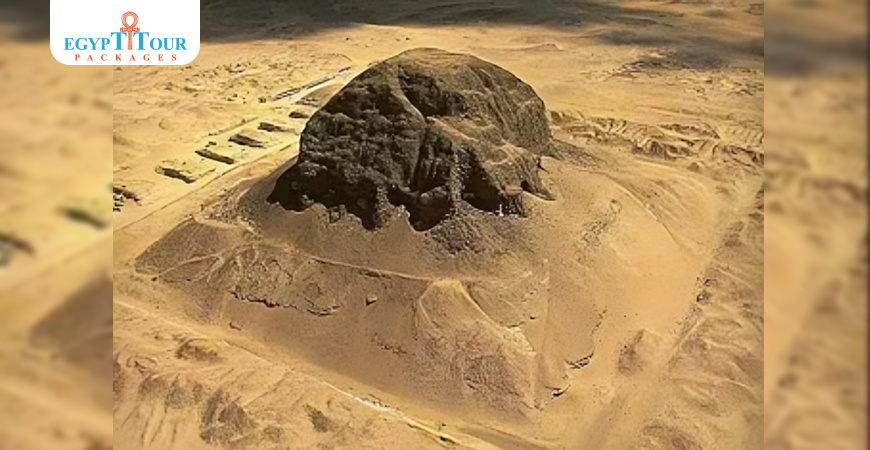
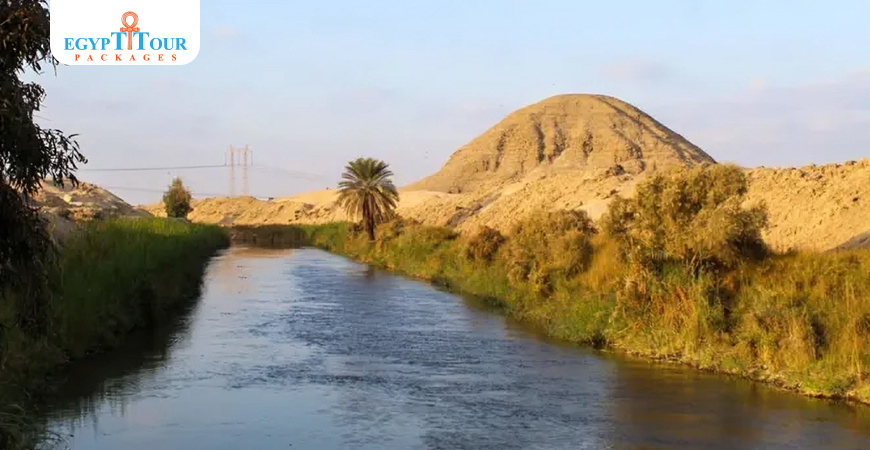
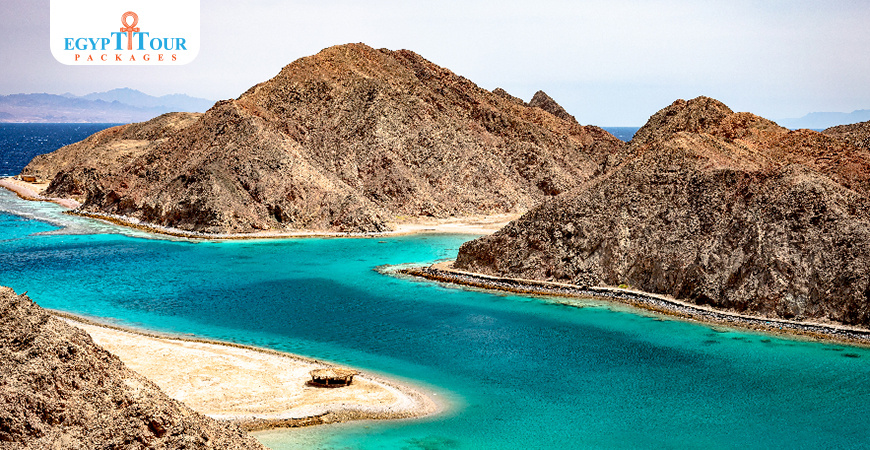

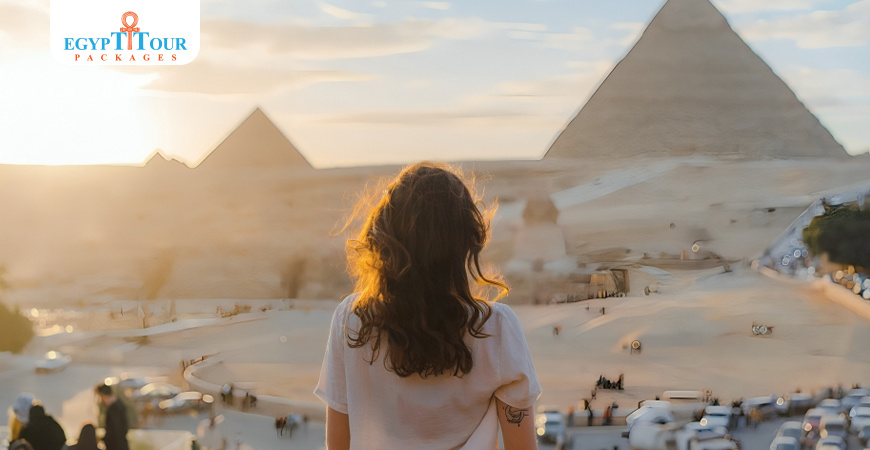
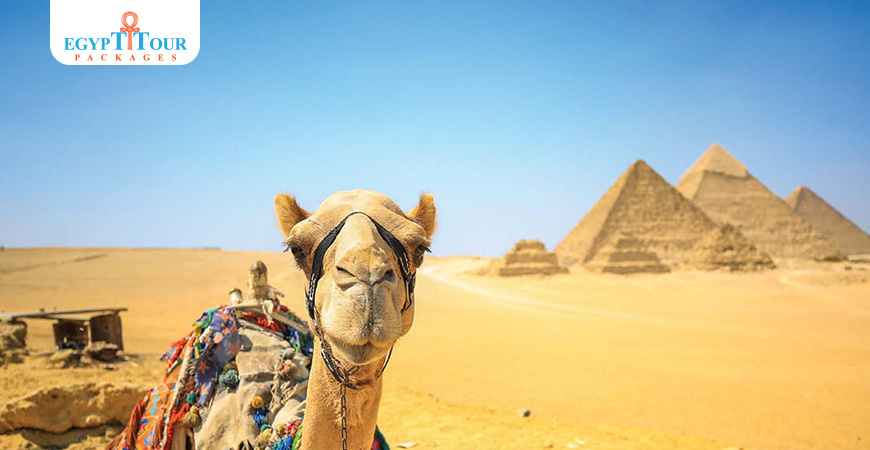











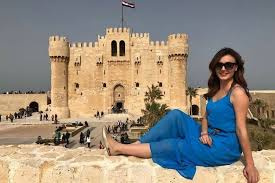

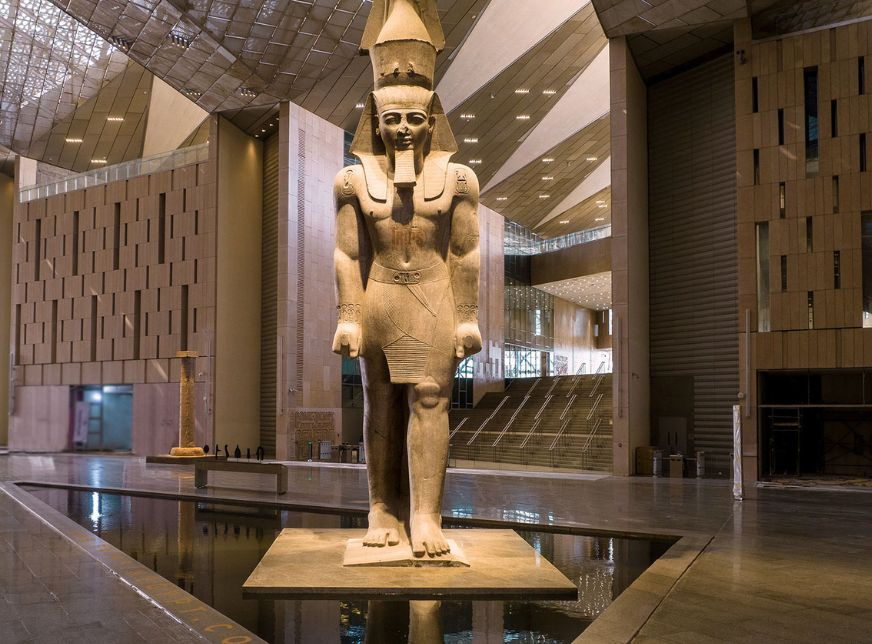





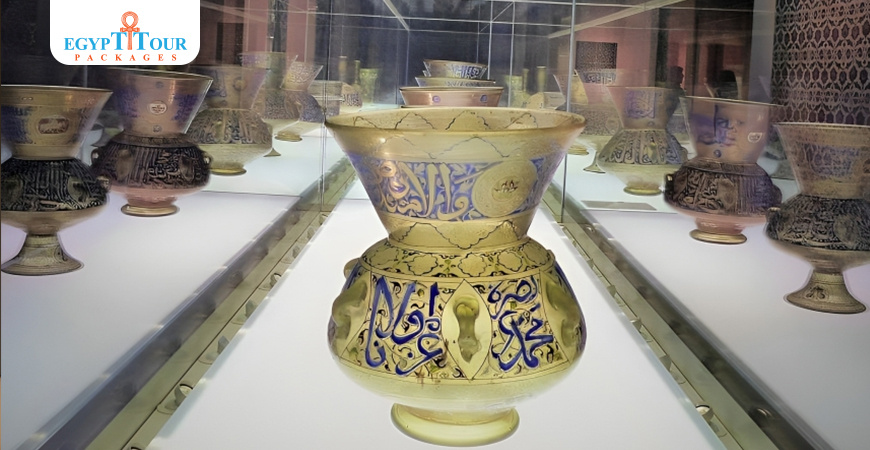
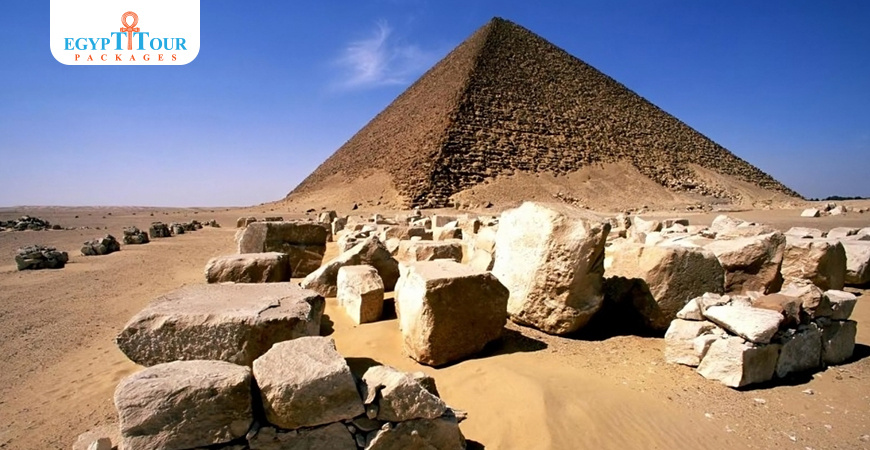








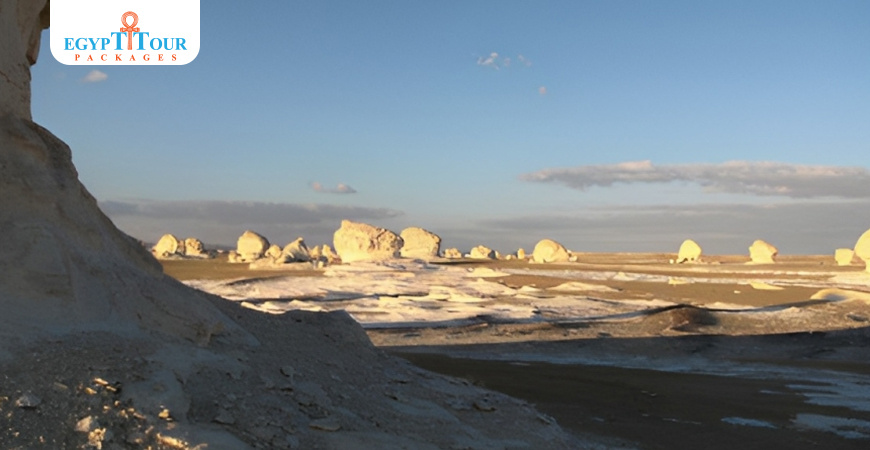

0 Comments